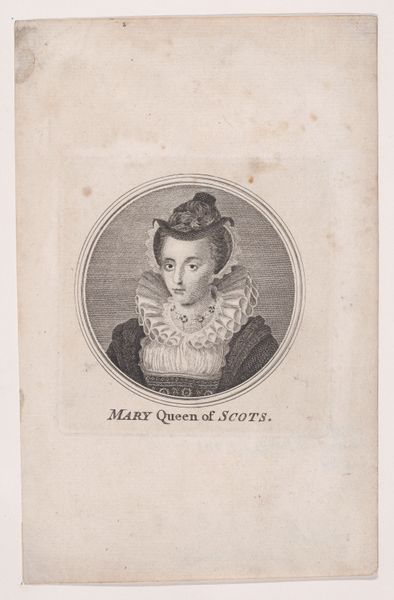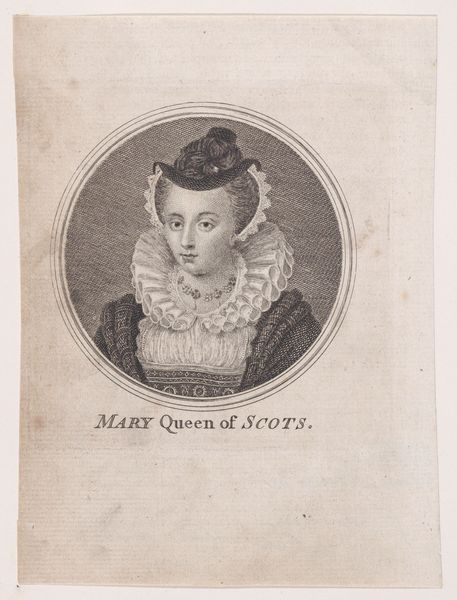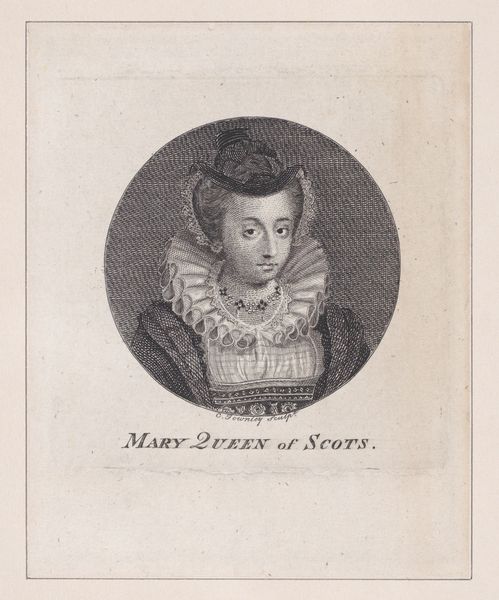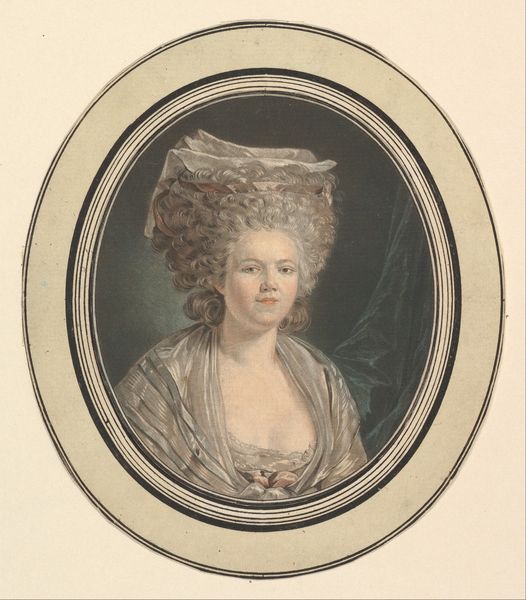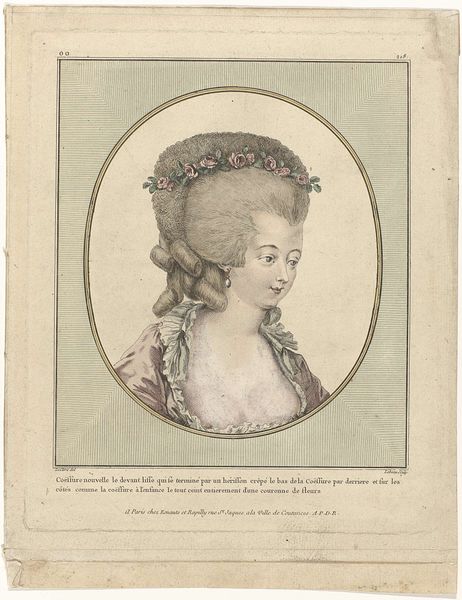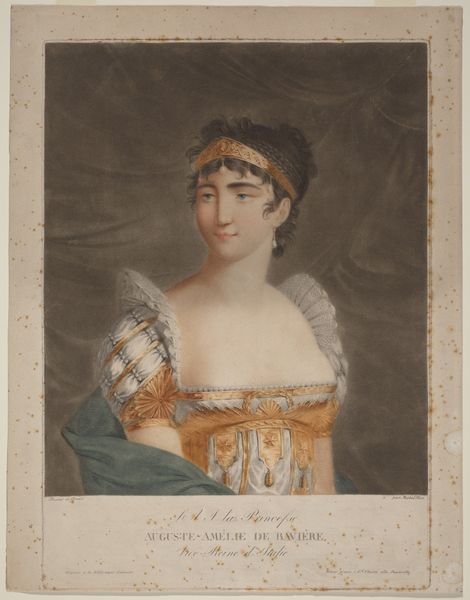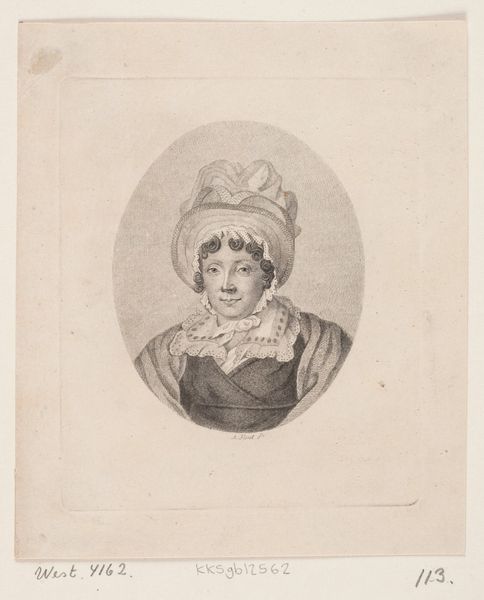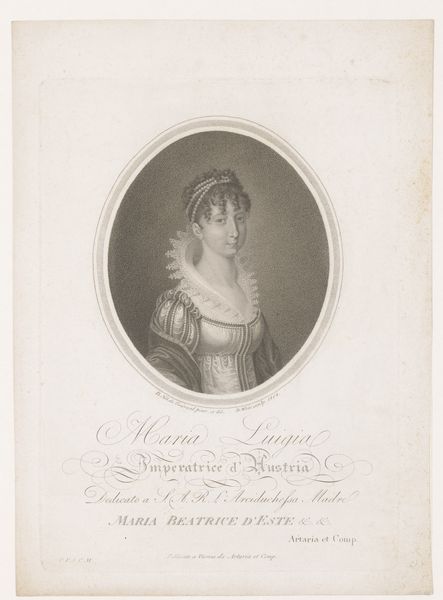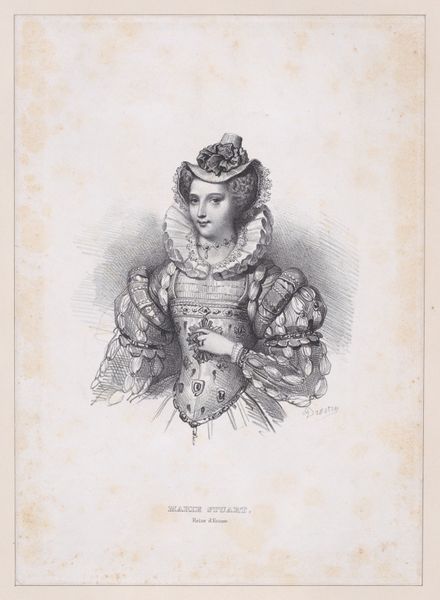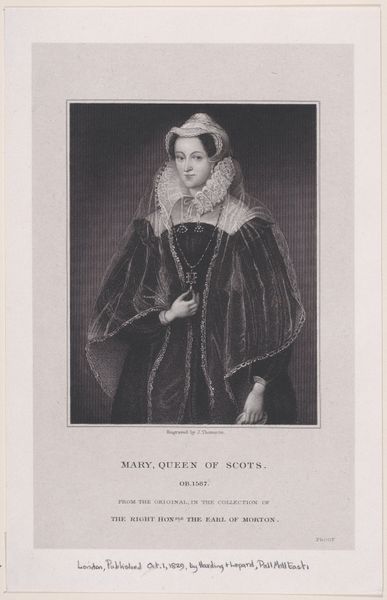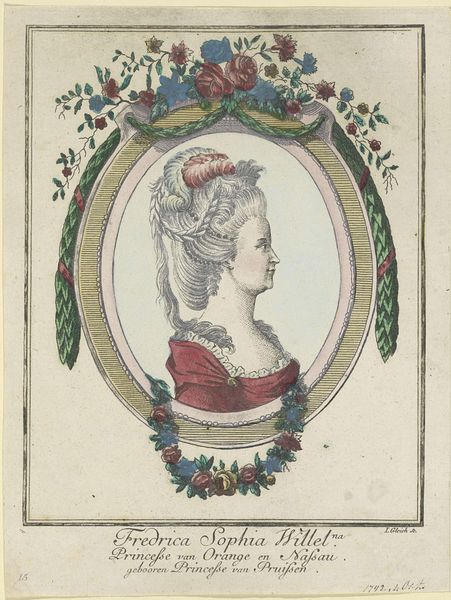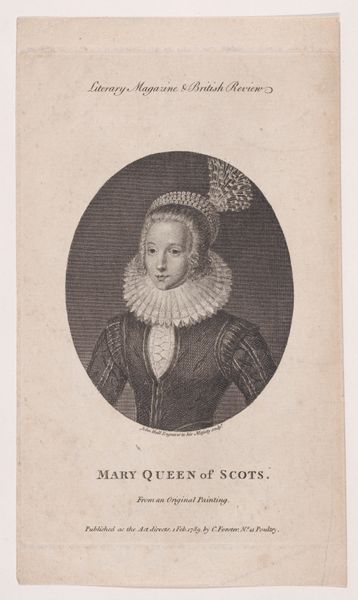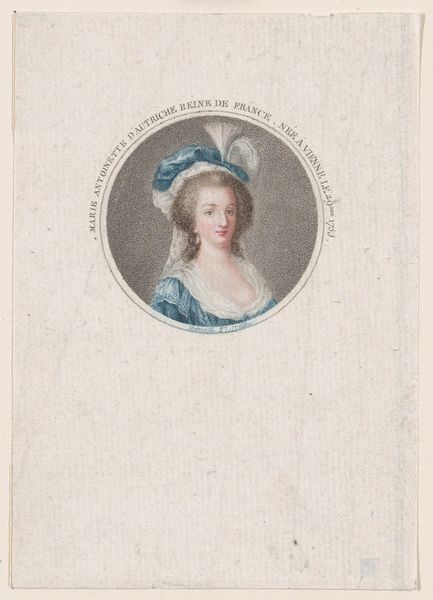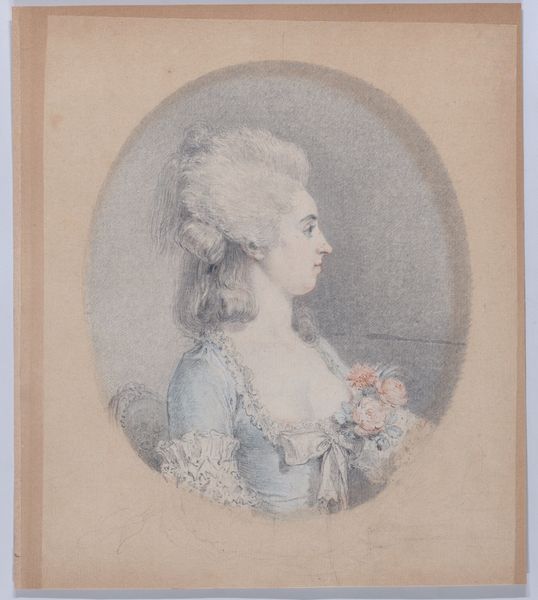
drawing, coloured-pencil, print, watercolor
#
portrait
#
drawing
#
coloured-pencil
#
water colours
# print
#
11_renaissance
#
watercolor
#
coloured pencil
#
history-painting
Dimensions: Plate: 3 7/8 × 3 7/8 in. (9.9 × 9.8 cm) Sheet: 4 7/8 × 6 7/16 in. (12.4 × 16.3 cm)
Copyright: Public Domain
Editor: Here we have "Mary, Queen of Scots" a coloured-pencil drawing made by Robert Strange sometime between 1735 and 1765. The tight circular composition really emphasizes her elaborate ruff. What catches your eye? Curator: The very thing. Let’s examine the articulation of that ruff. Observe how the artist deploys a subtle, almost monochromatic range of whites and creams to define its complex folds. Notice the strategic use of light and shadow, achieved through delicate layering. It is precisely this kind of detailing which allows Strange to create depth. Do you see how this formal technique is balanced with more straightforward draftsmanship in rendering her face? Editor: I do! The face seems flatter in comparison. It feels less...alive? Curator: Indeed. The artist’s skill lies not just in capturing likeness, but in manipulating the formal elements. Look at the circle around her. What function does that serve? Editor: It feels like a frame within a frame, drawing our eye to the Queen’s face and the craftsmanship of the portrait itself, and less to what she represents or did. Curator: Precisely! And consider the relation of the colouring of the backdrop. How does it interact with the colouring in her face? Editor: The backdrop feels somewhat muted, giving way to the brighter skin of Mary, Queen of Scots, bringing her "character" to the foreground in comparison. Curator: An insightful observation. By directing our attention in such a careful manner, we are invited to analyze it from an aesthetic and artistic viewpoint rather than seeing it as only representing a certain royal. I appreciate the refinement that exists with the medium as it interacts with its message. Editor: I am struck by how focusing on the artistic decisions brings a fresh viewpoint to it! Curator: It is in such analysis that we discover the true nature of visual expression!
Comments
No comments
Be the first to comment and join the conversation on the ultimate creative platform.
